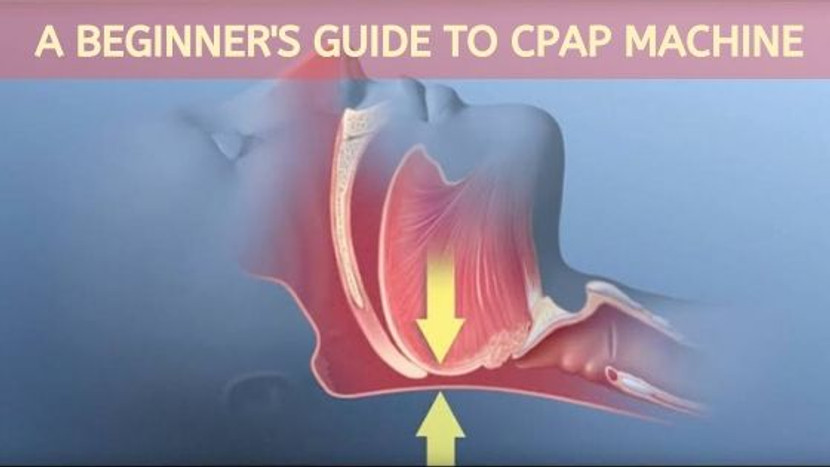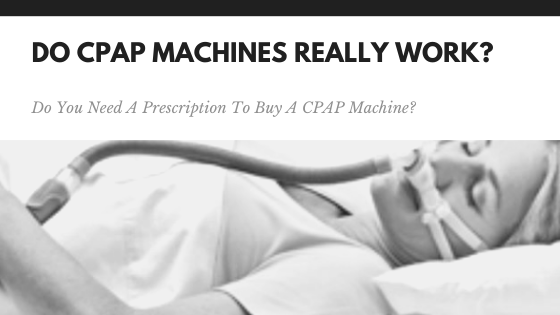A Beginner's Guide to Your CPAP Machine for Sleep Apnea Relief
Continuous positive airway pressure, CPAP, is an effective sleep apnea treatment. CPAP machines are designed to help patients sleep easier without potential complications associated with untreated obstructive sleep apnea. What makes a compact CPAP machine so effective for sleep apnea? Well, it is designed to blow air with constant pressure down your throat to keep the airways open during sleep.
How Does a CPAP Machine Work
A person suffering from obstructive sleep apnea experiences problems during sleep. The reason is the blockage of airway passage from the collapse of a throat tissue while you are asleep, preventing airflow from the mouth to lungs and resulting in abnormal heart rhythms. It is here that a sleep apnea machine could prove to be a powerful tool to prevent the airway closure and tissue collapse.
With CPAP equipment, there is a constant flow of air pressure inside the airway. This helps keep the airway open to prevent collapse. Consequently, normal breathing resumes and the patient is relieved from the consequences of obstructive sleep apnea.
The pressure from a sleep apnea treatment device comes from a small air compressor, which pressurizes ambient air. With enough pressure buildup, the machine releases air through a face mask, keeping the throat open and reducing the potential of airway blockage.
CPAP Machine can be either fixed or auto-titrating.
For fixed CPAP machines, pressure settings remain the same. On the other hand, auto-titrating CPAP machines are designed to adjust the air pressure setting depending on the patient’s breathing pattern. While both devices work to keep the airway open, auto-titrating devices are considered more comfortable due to the additional adjustment feature.
Humidifiers
The constant rush of air could dry up the mouth and nose. Luckily, heated humidifiers can be used to make the air moist with sterile water when you breathe. This ensures that when the air enters the lungs, it matches the body’s temperature and moisture.
Today, a majority of CPAP machine users prefer to choose a humidifier to deal with the dryness issue.
Getting Used to Sleep Apnea Devices
When it comes to getting used to the sleep apnea therapy, it is important to carefully select a CPAP mask that fits your specific needs. Consider your facial anatomy and shape of the nose before buying a mask. A leaky or an ill-fitting mask could blow air into your eyes. Additionally, this could mean you're not getting the full benefit of wearing a CPAP mask.
When looking for a mask, you may choose between full face mask and other masks.
Full face masks are designed to cover your mouth and nose. These are a good choice if you breathe through your mouth when asleep. The idea is to ensure that you feel comfortable wearing the mask and can easily breathe through it.
Other masks are designed with nasal pillows to give you added comfort and fit under your nose.
Getting used to wearing a CPAP machine could take some amount of time, but it's critically important to stick to the sleep apnea treatment to avoid serious complications of obstructive sleep apnea.
Recent Posts
-
A Beginner's Guide to Your CPAP Machine for Sleep Apnea Relief
Continuous positive airway pressure, CPAP, is an effective sleep apnea treatment. CPAP machines ar …Jan 28th 2020 -
Do CPAP Machines Really Work? Do You Need A Prescription To Buy A CPAP Machine?
A continuous positive airway pressure or CPAP machine provides the best possible sleep apne …Jan 12th 2020 -
Sleep Apnea: Symptoms, Causes and Treatments
What is Sleep Apnea? Sleep apnea is a sleep that has serious risks associated with it. It is an …Dec 4th 2019



